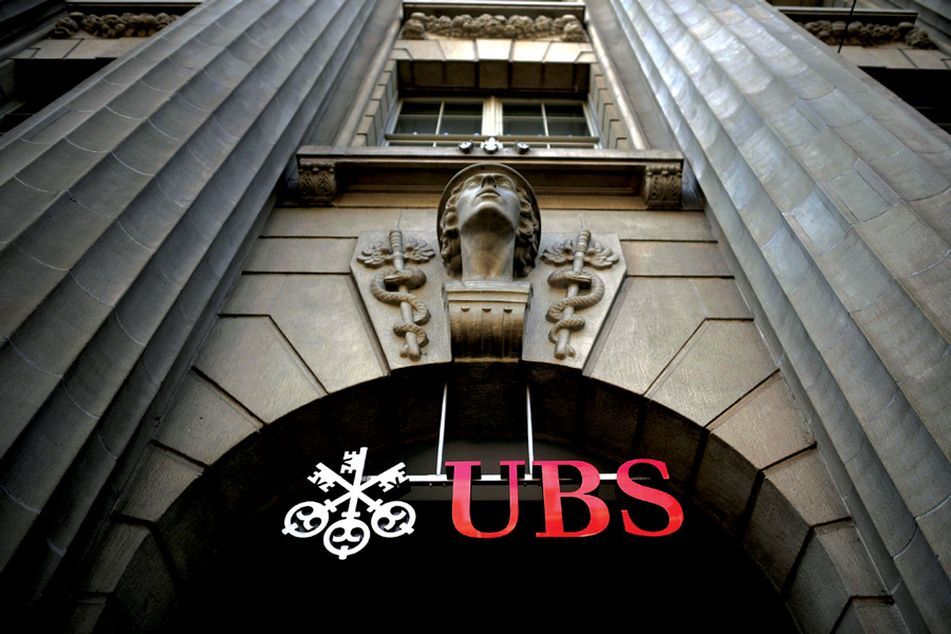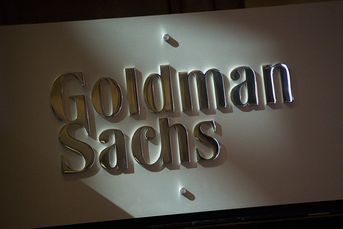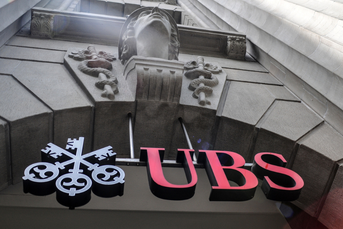UBS assets and fee income surge in Q2

The wealth management business saw $25 billion of inflows of net new fee-generating assets across all regions and also made $7 billion in net new loans to rich clients in the quarter.
UBS Group posted better-than-expected profit in the second quarter after Switzerland’s largest bank benefited from surging new assets and fee income, driving the shares to their biggest gain in more than eight months.
More than a year after the onset of the pandemic, the firm is seeing large increases in both recurring fee income — which the bank typically receives for helping manage client assets — and transaction-based earnings as clients boost trading. Those dynamics helped drive net income about 63% higher compared with a year earlier to $2 billion, beating analyst estimates.
Chief Executive Ralph Hamers is benefiting from buoyant markets and client demand after UBS pivoted away from more volatile investment banking to helping the rich manage their fortunes. Nine months in, he’s announced jobs cuts and indicated he wants to use artificial intelligence to lower costs as competition for wealthy clients increases. But with competition for talent heating up and uncertainty about the recovery, he’ll have to look beyond trimming expenses to maintain the bank’s edge.
UBS rose as much as 4.8% in Zurich trading, the most since November, and was 4.5% higher as of 12:11 p.m. local time.
The wealth management business saw $25 billion of inflows of net new fee-generating assets across all regions and also made $7 billion in net new loans to rich clients in the quarter as it seeks to deepen relationships with wealthy families. The bank said it’s focusing on growth in the largest and fastest-growing markets in the U.S. and Asia Pacific region, while warning activity is set to moderate.
“We expect our revenues in the third quarter of 2021 to be influenced by seasonal factors, such as lower client activity levels compared with the second quarter,” the bank said. “Higher asset prices should have a positive effect on recurring fee income in our asset gathering business,” it said.
JPMorgan Chase & Co. and Goldman Sachs Group Inc. said borrowing by rich clients boomed during the second quarter even as loans to less-wealthy customers continued to stagnate amid government stimulus. JPMorgan’s loans to wealthy clients increased 21% from a year earlier, while Goldman Sachs saw a jump of 43%.
[More: SEC orders UBS to pay $8 million over sales of complex exchange-traded products]
HIGHLIGHTS FROM UBS’S SECOND-QUARTER EARNINGS
- Net income of $2 billion vs. Bloomberg-compiled estimate of $1.3 billion.
- Wealth management pretax profit of $1.29 billion vs $1.18 billion estimate.
- Investment bank pretax profit of $668 million vs $414.1 million estimate.
- Bank plans to buy back $600 million of shares in third quarter.
- Wealth management recurring fee income gained 30%; transaction income gained 16%.
UBS may also benefit as its cross-town rival Credit Suisse Group struggles with defections in the wake of twin hits from Archegos and the collapse of a $10 billion group of funds that it ran with now-defunct Greensill Capital. Credit Suisse is scheduled to report second-quarter earnings July 29.
At the investment bank, UBS benefited from its focus on equities in the second quarter, which partially compensated for lower revenues in foreign exchange, rates and credit. Results included an $87 million hit from the collapse of Archegos Capital Management that the bank had already flagged in the first quarter, when it booked a surprise $774 million hit from Archegos. Chairman Axel Weber later apologized for the loss.
Hamers said on a conference call Tuesday that the bank plans to give investors a strategic update in the fourth quarter, including the setting of new financial targets. The lender had already met or exceeded its key metrics for the 2020-2022 period, including on group returns and its cost to income ratio.
Alongside its U.S. peers, UBS is navigating a slump in trading revenues as the pandemic-induced volatility in markets is fading. Global banking revenue, which includes the business of advising on deals and capital raisings, surged 68%, helping offset weakness elsewhere in the investment bank. That’s similar to the U.S., where dealmakers on Wall Street had some of their best performances on record, with an average increase of 11% across the largest firms.
The bank also expects M&A and equity capital markets activity to remain high in the third quarter. UBS more than doubled its revenues in its advisory business in the second quarter, driven by mergers and acquisitions.
UBS took a $89 million restructuring charge in the second quarter, compared to the $300 million expense it had signaled in the first quarter, indicating the bank may not have dismissed as many people as expected. The bank’s strengthening capital buffer gives it strategic flexibility and a buffer for any hits down the road, according to the lender.
Learn more about reprints and licensing for this article.








